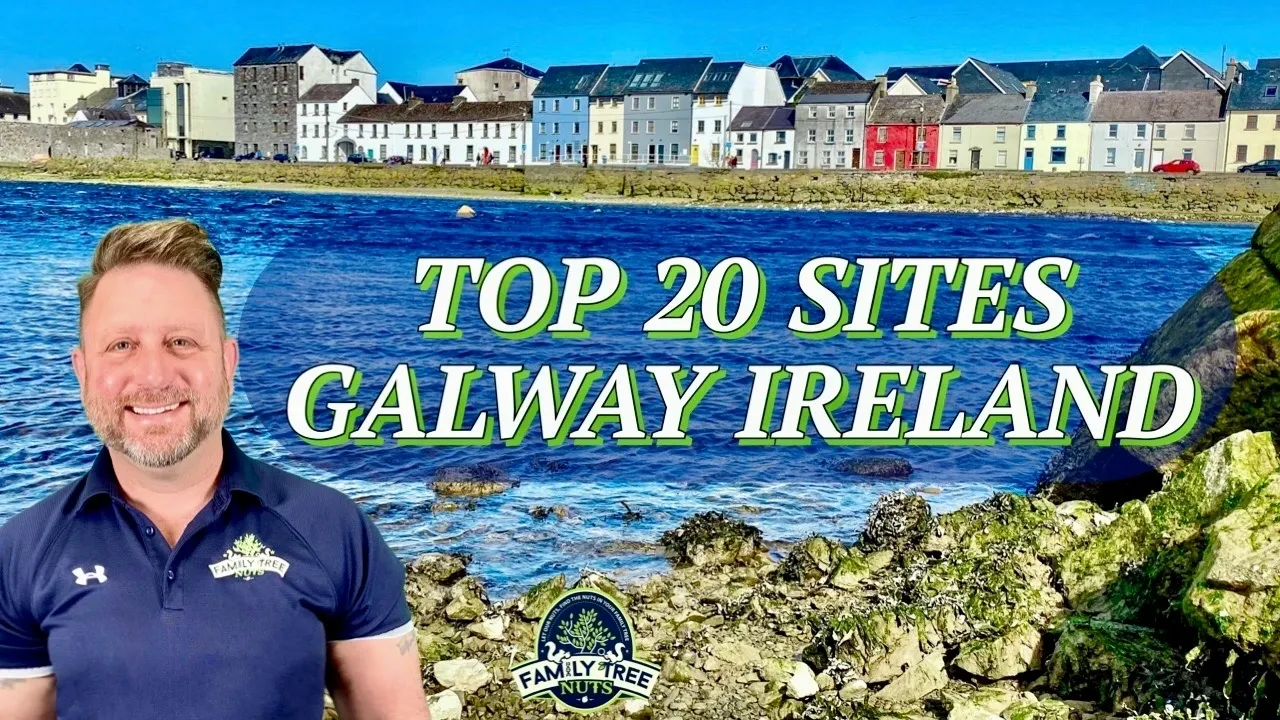
TOP 20 HISTORY MUST SEES IN GALWAY, IRELAND
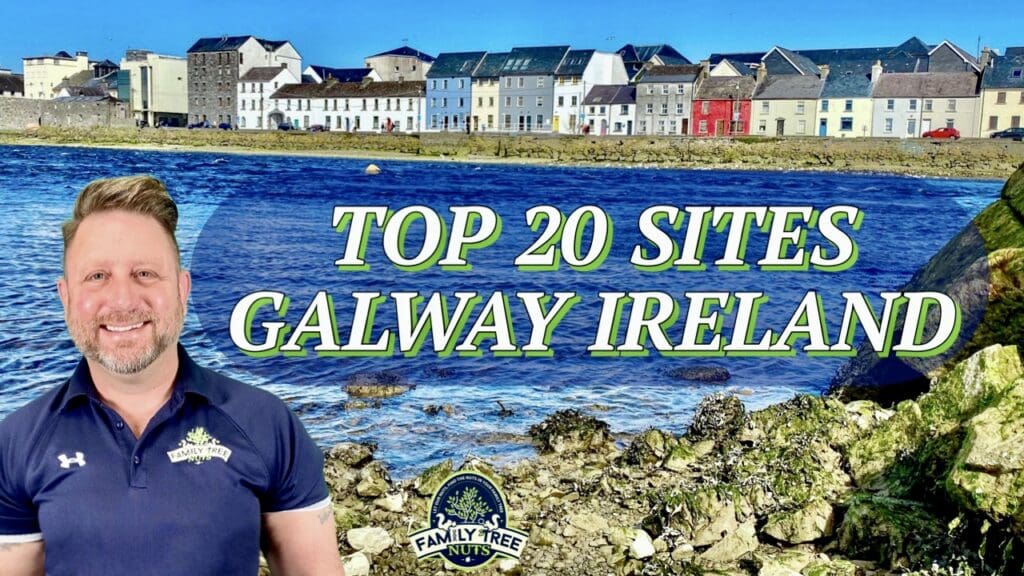
Galway, Ireland is one of the most popular destinations for tourists visiting Ireland because of its rich history and culture. It’s isolation on the fringes of Europe has somewhat kept it isolated which helped to preserve its ancient culture. Its nickname is “The City of Tribes” because for centuries the cities affairs were controlled by fourteen merchant families. It’s unknown how long human settlement has lived here but we know that a fort was completed at the mouth of the River Corrib in the year 1124, around 900 years ago.
Recently we visited Galway, took in the sights and made this list. It should be mentioned most of these sites are historic places and many modern highlights of Galway have been left out. It should also be mentioned that this list could have been fifty or more but we tried to limit them to the absolute best. Bear in mind, this is our list. We are a team of historians and genealogists and you may totally disagree with the way we have ranked them, so be sure to leave a comment below of how you would have changed these up a bit or tell us what we left out. And by the way, if you like articles like these, be sure to check out our website at, www.familytreenuts.org to see many more. Most of our articles are at historical sites all over the United States but we do have several in a few countries.
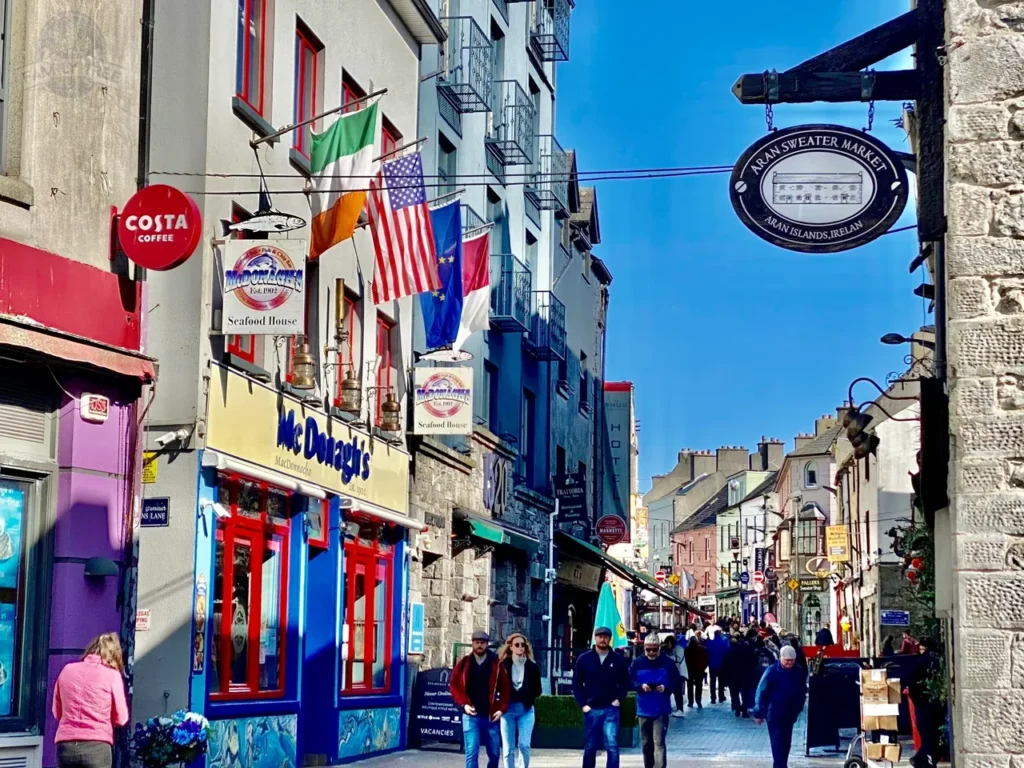
Oh, I almost forgot to tell you, this video has a little bit of a surprise ending, so you will want to hang in there until the end for the surprise. Ok, enough rambling, and on to the list!
20- The Pub of Your Choice
As with anywhere in Ireland, the local pub is the place to go to see the true culture of the area and this is certainly true in Galway. County Galway has around 475 pubs so you’d better get up early in the morning to try to hit them all. Many of the pubs are centuries old and that comes with a tremendous amount of individual character. Galway’s pubs are known for having sing-alongs in traditional Irish music and that is something most of us are looking for when you visit Ireland.
19- The Oscar Wilde and Eduard Vilde Statue
Oscar Wilde was a famous Irish poet and playwright that was controversial to some and genius to others. Eduard Vilde was an Estonian writer and a diplomat. An Estonian artist created this statue in 1999, while imagining what the two great innovators with similar names would have said to each other if they ever met, even though they never did. This statue is a replica of the one in Estonia and was a gift to Galway when Estonia joined the European Union in 2004.
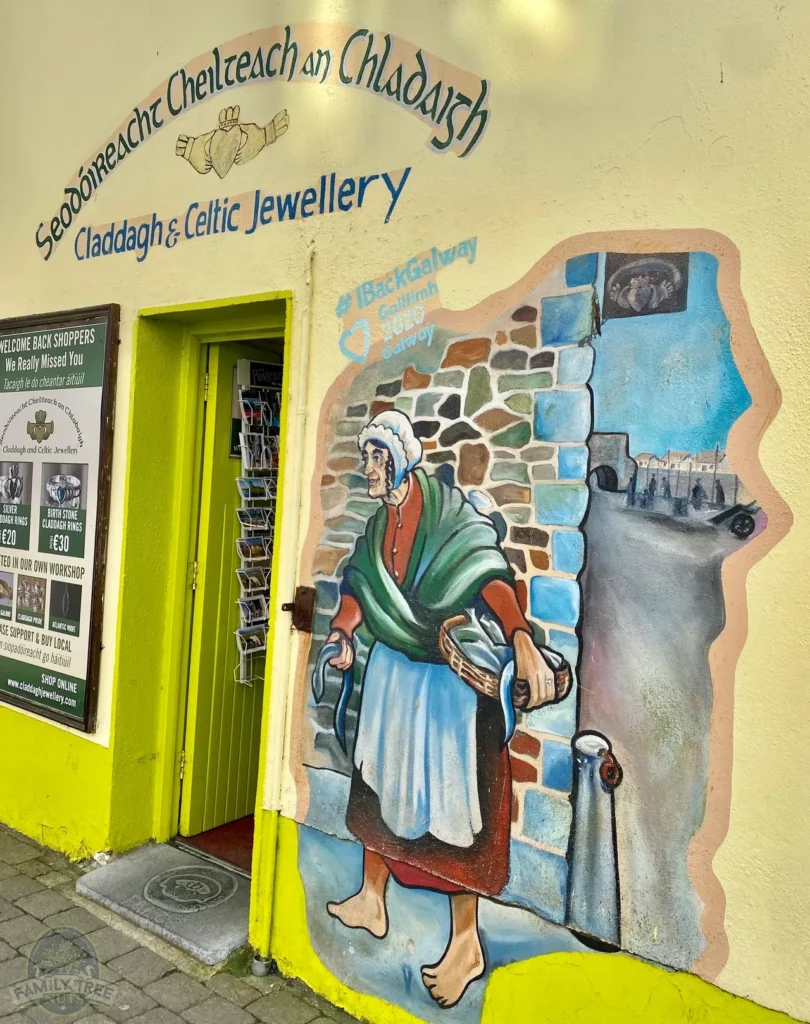
18- The River Corrib
It is hard to understand Galway without understanding the River Corrib’s influence on the city. Galway sits at the mouth of the river where it empties into Galway Bay and the Atlantic Ocean. The name Corrib is an anglicized version of an Irish word for the god of the sea. The river has also been called Gaillimh, which is pronounced Galway in English and where the city got its name. It is one of the shortest rivers in Ireland being less than four miles long beginning at Lough Corrib before it empties into Galway Bay. Four bridges in Galway cross the Corrib and it is a natural divider of sections of the town. It is a popular spot for salmon fishing and today is popular with kayakers.
17- The Fisheries Watchtower Museum
This museum is said to be the smallest museum in Ireland and holds artifacts and memorabilia pertaining to the important fishing industry in Galway. The building was built in 1853 and used as a watchtower to illegal fishing on the River Corrib. Its uniqueness makes it a must see when traveling across the Wolfe Tone Bridge on your way to Claddagh.
16- The Buskers
While buskers exist all over the world’s cities, Galway is specifically known for its variety and quality of them. People come from all over the world to busk on the streets of Galway. You can find buskers that range from a ten-piece band to the more common individual. The city does have rules in place to keep down the congregation of crowds and buskers must have at least twenty songs in order to get a license to perform.
15- The Jewelry Shops
Celtic jewelry is popular all over the world, especially for those of us with Celtic heritage. Galway is known for its amazing jewelry stores that have tremendous personality. Many of the shops have individuals who make them or at least modify the jewelry in house. Many of these stores have been around longer than the United States has been a country and that personality makes it an amazing memory to make your selection there. Some of these stores have had many well-known regular customers.
14- Medieval Art and Decorations on Buildings
As with all countries in Europe, Ireland’s cities are centuries old. In the old section of Galway, you will find all things modern world, mixed with medieval time architecture and art. Many of the buildings have family crests, decorations and writings that are as much as 800-years-old. It is an amazing mix of the medival world mixed with modern times.
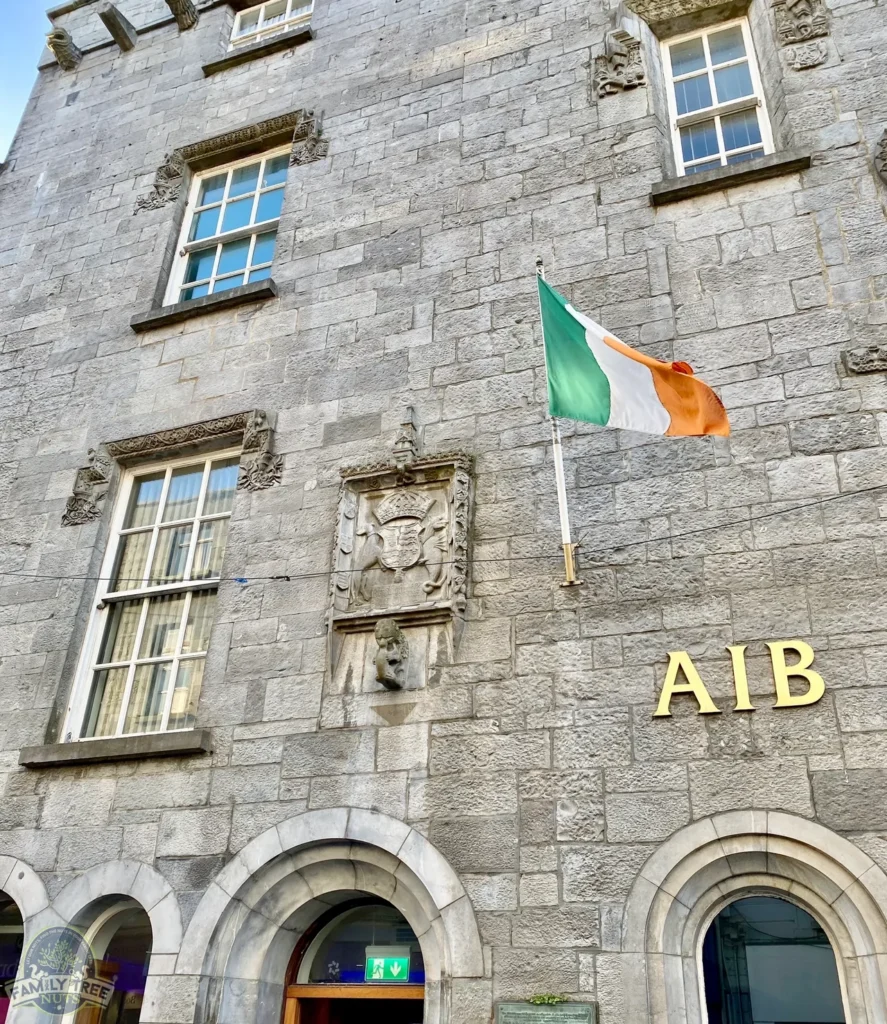
13- The Hall of the Red Earl
In Galway you can visit the ruins of the Hall of the Red Earl who was the head of the ruling de Burgo family until they were ran out of power by the fourteen tribes. which was built in the 1200s as a municipal building or custom house and had disappeared from history by being covered up by modern buildings until it was discovered in 1997. Today you can at any time pass down Druid Lane and see the ancient remains of the castle from behind glass walls.
12- Castle Ruins Inside the Famous Aran Sweater Market
The Aran Sweater Market in Galway is famous in its own modern right and if offers a variety of woolen sweaters, clothing, blankets, and hats, but during a remodeling project in 2017, it was discovered that under the building sat the ruins of the first castle in Galway, built in the year 1232 by the de Burgh family. The ruins are now visible on the floor at the cash register counter of the store.
11- The Kings Head
The Kings Head Tavern and Restaurant in Galway is one of the most unique spots anywhere. The building is over 800-years-old and was once the home of the Mayor of Galway, Thomas Lynch Fitz-Ambrose until it was seized in 1653 during Galway’s surrender to Colonel Peter Stubbers who was one of Oliver Cromwell’s men. Colonel Stubbers was said to be the man who beheaded the Catholic King Charles I a few years earlier in 1649. The king had been condemned to death but no one was brave enough to actually do the execution until Colonel Stubbers stepped up and took on the gruesome task.
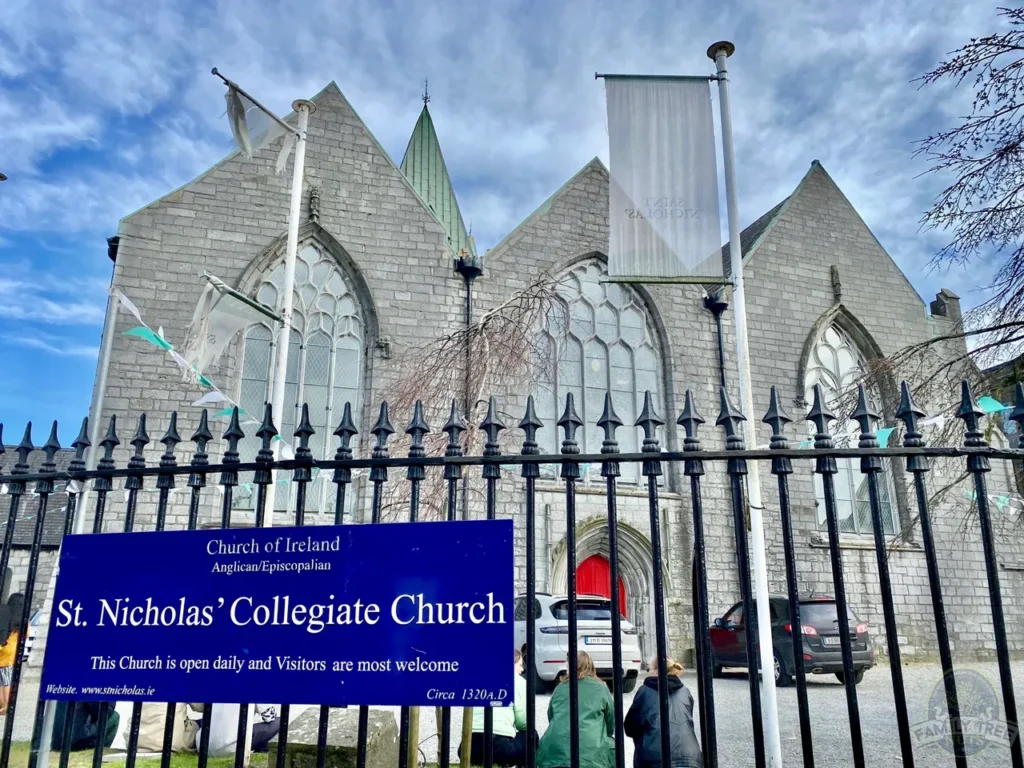
10- Claddagh Museum
The Claddagh ring has become part of Irish culture and you can learn all about its history and symbolism in Galway’s Thomas Dillon and Son Jewelry store which was founded in 1750 and has reportedly produced the iconic ring since its beginnings. This little museum is jam packed full of history relating to the ring and has several rare and valuable Claddagh rings on display.
9- Blake’s Castle
One of the most preserved buildings in Galway that has survived since medieval times is the tower of Blake’s Castle which was built in the 1500s. The castle was home to the Blake’s, one for the fourteen ruling merchant tribes of medieval times. The castle sits near the Wolfe Tone Bridge on the River Corrib and across form the Aran Sweater Market. This spot is not only a very historic spot in Galway, it is one of the most picturesque locations to see down a street where the ancient world meets the modern world. This castle is not to be confused with the ruins of Menlo Castle in the county and sometimes referred to as Blakes Castle.
8- LYNCH’S CASTLE
Lynch’s Castle was built in the 1500s and is touted as being the finest 16th century tower house in Ireland. The castle was home to the Lynch family which were one of the 14 ruling merchant tribes of Galway. One story about the Lynch family was in 1493 when James Lynch Fitzstephen was the mayor of Galway, his son was convicted of murdering a Spanish sailor. Upon his conviction, Mayor Lynch hung his son outside of a window for all to see. This is said to be where the word “lynch” or “lynched” comes from. The castle is decorated with crests of the family and a carving of a monkey with a baby. It is said that one time during a fire, a baby of the family was rescued from the house by the pet monkey and the family commemorated the fortuitous event with the carving. The castle is now an AIB Bank.
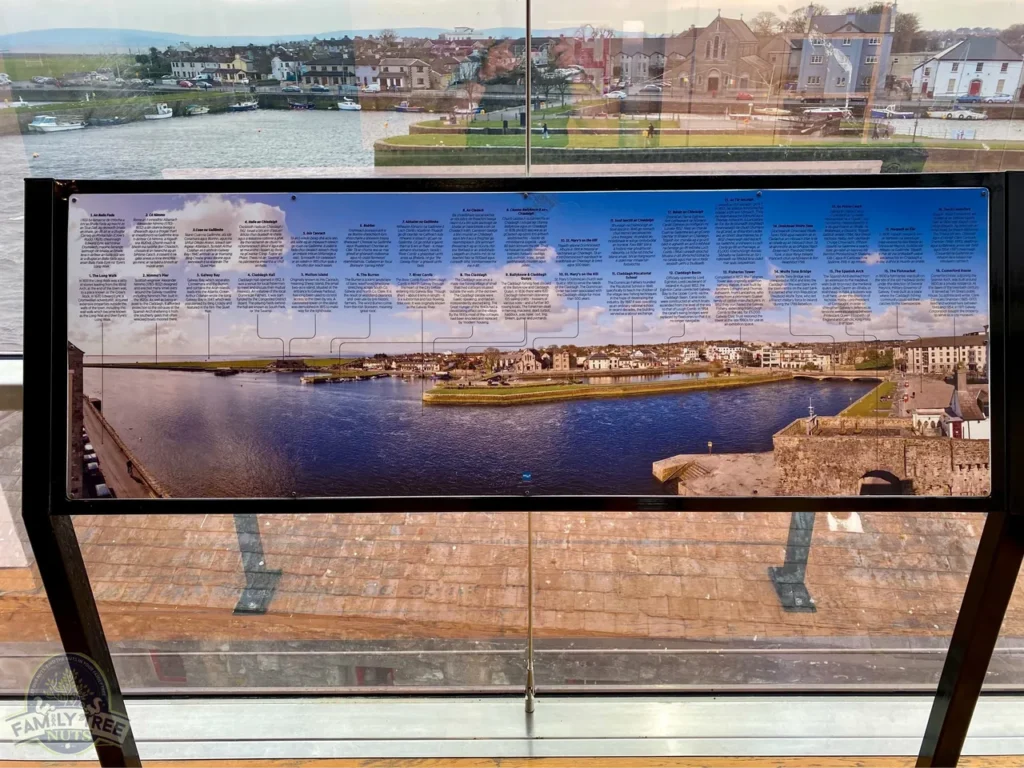
7- Galway City Museum
The Galway City Museum sits on one of the most historic spots in the city, just inside the Spanish Arch, overlooking The Claddagh across the River Corrib. The current museum which was built in 2007 houses three floors of detailed regional and Irish history. Its main exhibits showcase several subjects which include ancient regional history, the Celts who settled the area and their culture and customs, the Irish struggle for independence in the early 1900s, The Claddagh, and the maritime history and marine biology of the area. The museum has walls with full length glass overlooking The Claddagh and the Spanish Arch. Be sure to see our individual video from here!
6- Medieval Walls Inside The Galway Mall
It is odd to find a visit to a modern mall on the list of top historic places of an area, but the Galway Mall is no ordinary mall. Inside among the modern stores is a section of the original city wall that was built between the years 1250 and 1270 that encircled the town for protection. When the mall was built in 2000, this section of the almost 800-year medieval wall was saved and protected inside the mall for us all to marvel at. Seeing a structure with so much history inside a shopping mall is something that is hard for us in the United States to fathom.
5- Galway’s Kirwan’s Lane
Kirwan’s Lane is a small stretch of road that is almost untouched from medieval times and its architecture is from the 1500s. The lane was inside the old medieval walls of the city and is named after the Kirwan family which is one of the fourteen ruling merchant tribes of Galway. The lane is the site of the famous 1700s Martin Theatre where the patriot Theobald Wolfe Tone once performed. Walking quietly down Kirwan’s Lane you can really imagine that you are back in time.
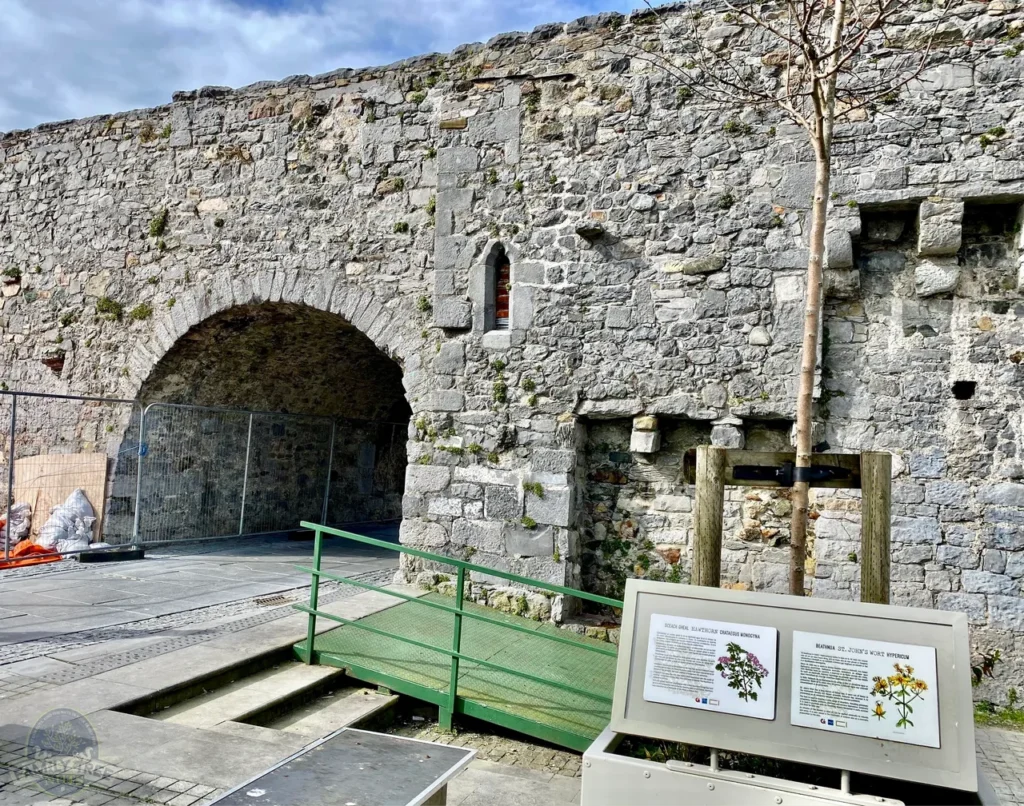
4- The Spanish Arch & Christopher Columbus Monument
The Spanish Arch is one of the last remaining sections of the old medieval wall that surrounded Galway. The arch was part of an extension of the original walls and was built in 1584 and a defensive structure to defend the city from raids. When it was built, the water ran all the way up to the arch and it was damaged by a tsunami that followed the Lisbon earthquake in 1755. It is amazing to imagine all that this section of wall has seen and by passing through it you are doing something that untold others have done for centuries. Outside of the Spanish Arch is the statue to Christopher Columbus that states, “On these shores around 1477 the Genoese Sailor Cristoforo Colombo found sure signs of land beyond the Atlantic”. The statue was donated by the city of Genoa, Italy, in 1992, the five-hundred-year anniversary of Columbus’ famous voyage, to celebrate the piece of Columbus’s story that the City of Galway has. Also, outside of the Spanish Arch is a small concrete obelisk with a marker that states, “The Galway Democratic Republic was declared on October 4, at this spot”. I must admit that while filming the arch, I backed into this monument and fell completely over it, and landed on my shoulder, in front of a large crowd. Now that’s a memory that will stick with me!
3- Saint Nicholas’ Collegiate Church
One of the most beautiful historic buildings in Galway is Saint Nicholas’ Collegiate Church was built in 1320, over 700-years-ago. The church is dedicated to Saint Nicholas of Myra, the patron saint of seafarers, archers, repentant thieves, brewers, pawnbrokers, unmarried people, students, and of course children. Saint Nicholas was known for secret gift-giving and that lead to the tradition of Saint Nick, or as we know him, Santa Claus. So, in a roundabout way, I suppose you can say that this is the church of Santa Claus. Like any churches from the medieval times, the church has played a large role in the history and politics of the city. It is said that when Christopher Columbus visited Galway, he worshiped at this church. The architecture is amazing to look at and folks gather in its yard to socialize or have their lunch. By the way, the sign posted states that antisocial behavior is forbidden so perhaps you should make sure that you kiss the Blarney Stone before you visit Galway. Outside the church fence the Galway Market at Saint Nicholas Church is held. Here you will find stalls with vendors selling food, crafts, art, and other trinkets of interest.
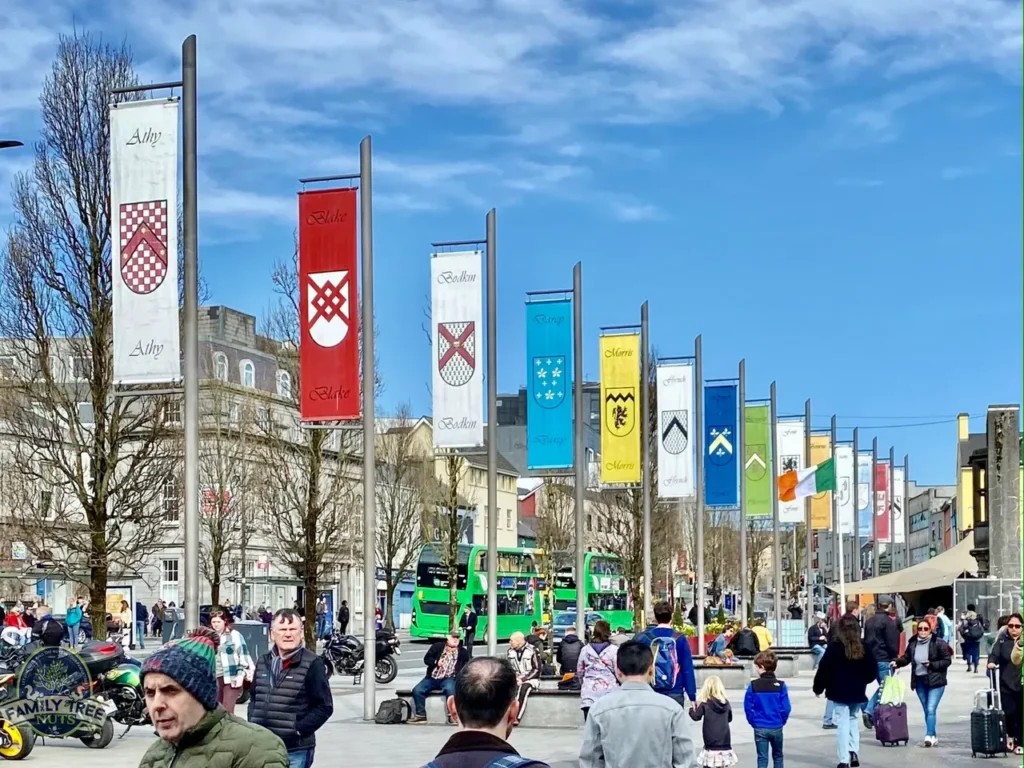
2- Eyre Square
Eyre Square is the center of activity for the city of Galway. This spot has been an open area since the early days of the city and served as a town green used for livestock grazing or gathering place. Eyre Square is sometimes called John F. Kennedy Park because JFK visited the square and gave a speech on June 29, 1963, and was the first president to do so during his term of office. A monument commemorating the event sits on the edge of the square. The Square is home to several attractions throughout the park. One of which is the fountain with the metal artwork of the Galway Hookers, which are the fishing ships that have been so important to the city’s economy. Another attraction of note is the Liam Mellows statue who was a hero of Ireland’s War of Independence. Near the center of the park is the statue of Pádraic Ó Conaire, the author so important to the rebirth of the Irish language. In the front of the square you will find the Browne Doorway. The doorway was built in 1627 and used to be on the front of the Browne Mansion, one of the fourteen ruling merchant families of Galway. The door was moved to Eyre Square in 1905 and used as an example of the elaborate architecture of the city in medieval times. Also, in the front of the square you will find banner flying for each of the fourteen merchant tribes of Galway that played such an important role in the city for over five hundred years. It is easy to see why Eyre Square has certainly been one of the most important spots in Galway since its beginnings.
1- The Claddagh
Love, Loyalty and Friendship. Those three powerful words make up the meaning of the ring worn throughout five different centuries, by millions of Irish, and those of us with Celtic ancestry. Even if you haven’t had one yourself, chances are you have seen someone wearing one, or at least seen the image somewhere. It has become a fashionable way to celebrate one’s heritage and pride of their Celtic roots. It is surprising that even with the ring’s popularity, very few know the origin of the ring and where it came from. The ring sprung into existence around the year 1700 out of an ancient small fishing village outside the city walls of Galway. The legend tells of Richard Joyce who was betrothed to soon be married, but captured by North African pirates, and spent fourteen years as a slave of a jewelry maker. He used his new-found skills to fashion a ring for his love at home and when he was released he returned to Claddagh and married her with his ring. That ring now is all over the globe and you can walk the shores of where it all began. Be sure to see our individual video from here!
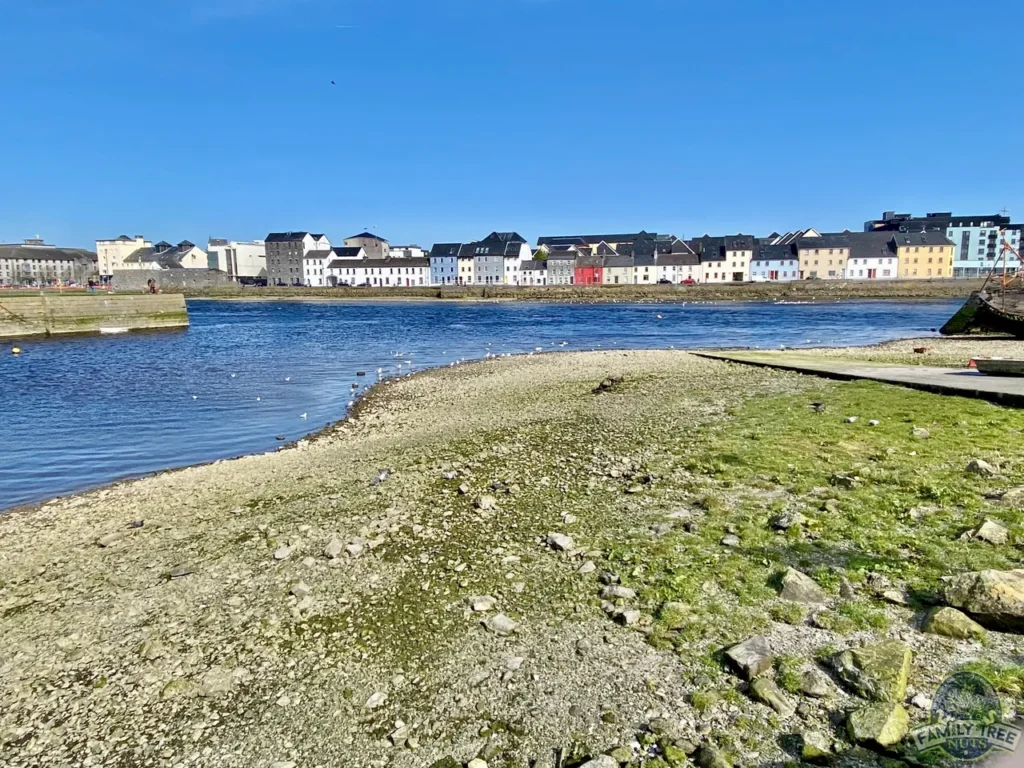
Bonus- The Cliffs of Mohr
The Cliffs of Mohr are not in Galway but only about an hour away from the city, so I wanted to make sure that I included them into this video. My wife Stephanie said that The Cliffs of Mohr was the most spiritual place that she has ever been. Words are hard to find to describe the majesty of these cliffs that are situated in County Clare, on the edge of Europe. The cliffs run for about fourteen miles and range from about 390 feet to about 702 feet above the ocean below. The cliffs are often the scene of wedding proposals, romantic kisses, and family photos and of course flex pictures. The cliffs have a very informative and well-done museum and interpretive center where you can learn about the history, biology and ecology of this unique area. This site is one of the most visited sites in all of Ireland with more that 1.5 million visitors every year. Words, pictures, and videos simply cannot describe the power of seeing the Cliffs of Mohr with your own eyes.
So that was it, our Top 20 list of must sees in Galway, Ireland. What do you think? Do you agree? Did we leave something out? We’d love to hear from you in the comments below. We are extremely proud to have brought you on this epic journey to all of these wonderful historic sites. Don’t forget to check out the video below that takes you to all these amazing sites.
– Col. Russ Carson, Jr., Founder, Family Tree Nuts
